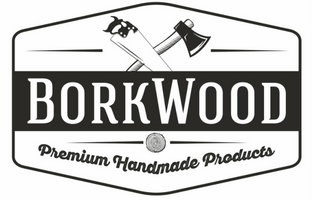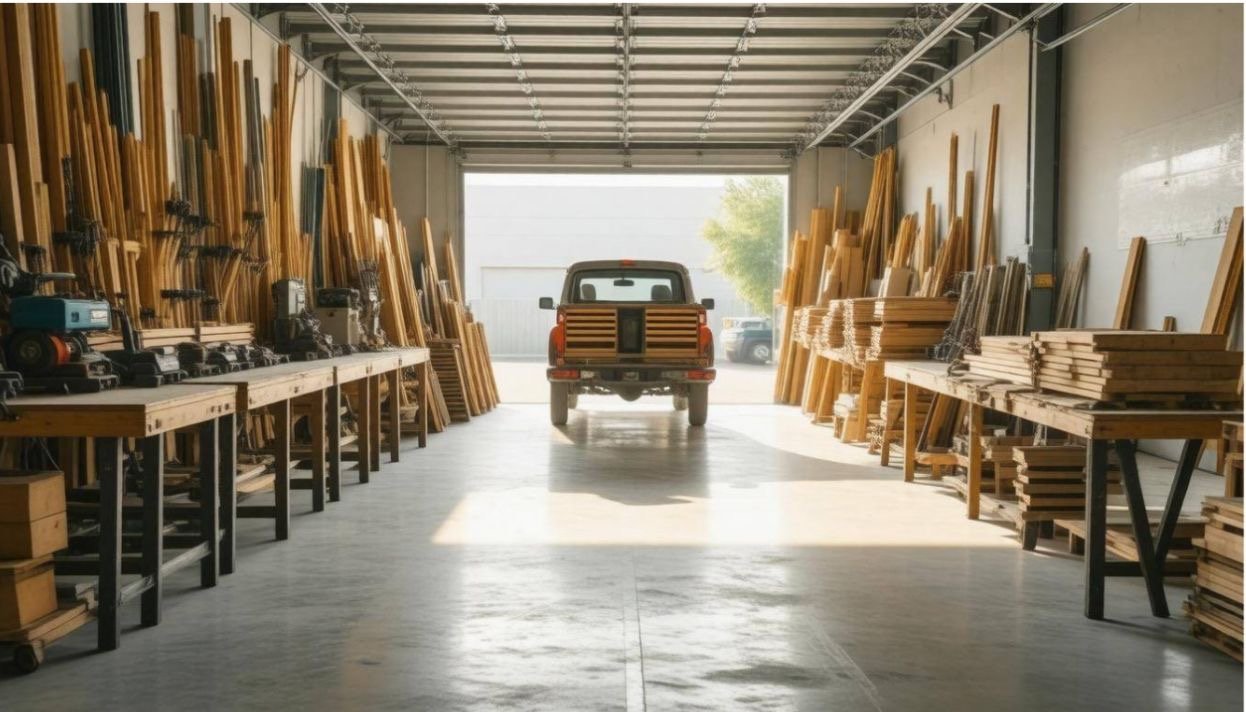Moving a Woodworking Shop Affordably: Budget Tips for a Smooth Transition
Moving a woodworking shop can feel like you’re trying to fit a jigsaw puzzle into a suitcase lots of pieces, and they all have to come together just right! Whether you’re upgrading to a bigger space or simply relocating, the process can be overwhelming. But don’t worry; with the right budget-friendly strategies, you can make the transition smooth and even save some money in the process. We’ve gathered practical tips based on real experiences that will help you plan, pack, and transport your tools without breaking the bank. Let’s dive into some smart ways to make moving your woodworking shop easier!
To move your woodworking shop affordably, start by creating a detailed plan that includes timelines and designated roles to ensure efficiency. Additionally, consider selling any large equipment you no longer need before the move, as this can significantly reduce shipping costs and enhance your budget for the transition.
Planning Your Move
The first step in ensuring a smooth transition for your woodworking shop is crafting an organized timeline with cheap moving options. This timeline acts as a roadmap guiding you through various phases of the move.
Begin by detailing every aspect: from when you’ll start packing small tools to when the large equipment will be disassembled and loaded. Having tangible deadlines keeps everything on track and prevents scrambling at the last minute.
Consider using online project management tools like Trello or Asana; they can transform chaos into clarity. You can create lists of tasks, assign dates, and even invite team members to collaborate if needed. Imagine your timelines laid out visually—tasks checked off as they’re completed, thereby offering satisfaction as you progress.
With a functional timeline in place, it’s time to prioritize inventory management.
Inventory Management
Next, a comprehensive inventory list becomes essential. Not only does it give you control over all your tools, materials, and supplies, but it also simplifies labeling and packing later on.
Start by cataloging each item meticulously; this isn’t just about counting tools but assessing their condition and potential value during transport.
Utilizing spreadsheets can help document details efficiently, allowing you to note the condition of each piece of major equipment. For instance, mark your lathe with its current operational status—this serves as both a guide for movers and future reference for yourself.
This organized approach not only eases the packing phase but allows you to quickly identify any items that might go missing during transit.
Additionally, consider creating categories within your inventory spreadsheet—for example, separating hand tools from power tools or large machinery from smaller consumables can help streamline packing and unpacking.
Remember that careful documentation of each item also comes in handy when filing insurance claims post-move should there be any damages, adding another layer of security to your process.
Lastly, don’t forget to label your bins thoroughly based on these categories. Clear labels mean fewer headaches later, as knowing what goes where significantly reduces unpacking time at your new woodworking space.
With a systematic inventory strategy established, you’re well-prepared for the next crucial phase where you’ll need to devise effective strategies for handling all your essential tools.
Packing Methods for Woodworking Tools
Proper packing methods can prevent damage to your tools and streamline the unpacking process when you reach your new location. For larger machinery like lathes and band saws, it’s crucial to think about stability and safety during transport. When it comes to smaller tools, however, organization is key to ensuring everything arrives intact and easily accessible.
Packing Heavy Machinery
For larger machinery, such as lathes or table saws, consider using wooden crates or heavy-duty moving boxes reinforced with extra padding. These options provide the sturdiness needed to withstand the rigors of moving. It’s wise to secure any moving parts with bubble wrap or moving blankets to keep them from shifting during transport. Reinforcing corners and edges of your crates can also help safeguard these vulnerable areas during handling.
Once heavy machinery is packed, tackle the smaller tools with a strategy that maximizes both protection and organization.
Packing Small Tools and Components
Organizing hand tools and smaller equipment into labeled bins is highly effective, especially when utilizing dividers for better organization. This layout keeps things neat and prevents items from clanking together, which can lead to scratches or worse. Opt for transparent plastic containers; seeing the contents at a glance saves precious time during unpacking.
Essential steps:
Creating a master list with the contents of each bin serves not just as an inventory but also as a roadmap for efficiently setting up your workshop once you arrive at your new home. This checklist can be invaluable as you sort through your gear post-move, allowing you to ensure nothing gets lost in the shuffle while helping direct movers on where to place everything upon arrival.
With these thoughtful packing strategies in mind, you’re ready to take on the logistics of transporting your woodworking shop efficiently and affordably. Exploring various transport solutions will play a crucial role in making this transition smooth.
Budget-Friendly Transport Options
When it comes to moving your woodworking shop, transportation costs can quickly spiral out of control. A careful, informed approach can minimize these costs while ensuring your valuable tools are safely transported. Renting a truck remains one of the most popular choices for DIY movers, yet there are many considerations to weigh before making a decision.
Rental Trucks vs. Professional Movers
Rental trucks, such as those from U-Haul or Budget, are often viewed as the economical choice when relocating a woodworking shop. Typically lower in cost than full-service movers, renting a truck allows you to maintain control over your loading and unloading processes. However, this route isn’t without its challenges. You must bear the physical burden of lifting heavy equipment and furniture, which may be daunting if you’re not physically prepared. Additionally, keep in mind the insurance coverage offered by rental companies tends to be limited, meaning any damage incurred could end up costing you significantly should something go wrong.
In contrast, hiring professional movers brings expertise that can safeguard against mishaps during transit. Their experience handling delicate and heavy equipment provides peace of mind, albeit at a higher price tag. It becomes essential to evaluate what is more important: saving money or investing in the assurance that your equipment will arrive safely.
Beyond traditional truck rentals and movers, alternative shipping methods expand your options further.
Utilizing Freight Services
If you’re not in a hurry to receive your items and have some flexibility with delivery times, freight services may present an attractive alternative. Companies like FreightCenter or FedEx Freight specialize in shipping bulky items economically, often at prices that are appealing compared to traditional door-to-door delivery methods. This is particularly beneficial for long-distance moves where expenses can accumulate unexpectedly.
The beauty of freight services lies in their capability to manage large shipments efficiently; they offer designated drop-off locations where you can deliver your equipment without the hassle of navigating a parking lot with a trailer attached. The only downside is scheduling flexibility—sometimes waiting an extra day or two for your items isn’t feasible.
Choosing between rental trucks, professional movers, or freight services hinges on your unique needs: budget constraints, physical capabilities, and urgency of delivery. Taking the time to assess each option will empower you to make informed decisions while ensuring your cherished woodworking tools remain intact throughout the move.
With transport options sorted out, it’s now crucial to explore how to efficiently set up and arrange your workspace in the new location.
Organizing Your New Workshop
The first step in organizing your workshop is creating a layout that makes sense for the tasks you’ll regularly undertake. Think of it like setting up a kitchen; the tools and materials need to be arranged so that everything is within easy reach while maintaining a smooth flow between workstations.
This planning stage should take into account not only the types of work you plan to do but also how you move throughout your space. For instance, installing large equipment along one wall allows for open space where you can maneuver larger pieces of wood easily without feeling cramped or disorganized.
Layout Planning
Before unpacking boxes filled with tools and equipment, take a moment to draft a detailed layout plan. You might want to sketch this out on graph paper or use design software to visualize how you’ll use the space. Consider key aspects such as workflow, safety, and ease of access.
By organizing your workshop setup logically, you reduce the chances of accidents, such as tripping over misplaced tools or materials scattered around.
Efficient Storage Solutions
Safety and functionality go hand-in-hand in a woodworking shop. Investing in smart storage solutions will help you maintain order amidst the potential chaos that comes from sawdust and busy workspaces. Wall-mounted racks are ideal for keeping hand tools off the surface area while still within arm’s reach. Pegboards allow you to hang frequently used items so they’re visible and easily accessible.
Here’s how to effectively utilize specific storage solutions:
Here’s a quick reference table to help streamline your organization process:
|
Item Type |
Storage Solution |
|
Hand Tools |
Tool Rack/ Pegboard |
|
Power Tools |
Shelving Units |
|
Wood Pieces |
Modular Storage Bins |
|
Hardware |
Labeled Drawers/Cabinets |
Now that we’ve covered layout and storage, it’s time to turn our attention to lighting and ventilation—two often overlooked essentials that are vital to a functional workspace.
Lighting and Ventilation
Adequate lighting transforms a workspace from dull to dynamic, boosting productivity while ensuring safety. Installing LED fixtures provides high-quality illumination with less energy consumption than traditional bulbs. Be sure to position lights above each workstation to reduce shadows cast by tools or materials.
Moreover, proper ventilation is crucial, especially when working with materials that generate dust or fumes. An effective exhaust fan will help circulate fresh air while removing airborne particles, significantly enhancing your working conditions.
Remember: An inviting, well-lit workshop paired with effective ventilation creates an environment conducive not only to productivity but also to your creativity.
Following these organization tips will set you up for success as you dive into your woodworking projects in your new space. Taking the time now will help prevent future headaches related to cluttered workspaces and lost tools, fostering a more enjoyable workshop experience overall.
With an organized workspace in place, it may be time to reassess what equipment you truly need for your woodworking endeavors.
Selling Unwanted Equipment
Moving is the perfect time to assess what equipment you truly need for your woodworking shop and part ways with anything that no longer serves a purpose. By decluttering in this way, you’re not just making your move easier; you’re creating an opportunity to benefit financially from tools you no longer use. Whether it’s that old lathe gathering dust or extra hand tools that have gone unused for years, there’s a market out there waiting for them.
Online Marketplaces
Start by exploring online marketplaces like Craigslist, eBay, and specialized woodworking forums. These platforms attract buyers who are keen on finding quality pre-owned equipment at a reasonable price. To ensure your items sell quickly, set fair prices by researching similar listings to gauge what comparable items are selling for. This will help you price competitively while maximizing your return. You might even think about bundling smaller items together to create attractive packages that appeal to buyers looking for a deal.
A well-timed sale can generate funding that’s useful for purchasing new tools for your workshop.
However, if online selling doesn’t suit your style, consider exploring local options.
Local Sales Options
Hosting a garage sale is a straightforward approach combine many smaller items into one event! It’s an excellent way to attract local shoppers interested in quality woodworking tools. Furthermore, reach out to local woodworking clubs and schools; their members could be looking for affordable tools and equipment to fuel their hobby projects or training programs. This not only helps you clear space but also supports your community by providing essential resources for budding woodworkers.
The resale value of used woodworking equipment typically reaches about 50-70% of the original purchase price. This can translate into significant savings when transitioning into your new workshop setup, making selling those extra items worthwhile.
Remember, including high-quality photos in your online listings significantly increases the chances of making a sale. So don’t forget to grab those cameras and capture your tools’ best angles!
With strategies to turn unwanted equipment into cash now explored, we can smoothly transition into discussing the crucial role moving professionals can play in ensuring your relocation goes off without a hitch.
Professional Moving Services Recommendations
When you’re moving a woodworking shop, the task can feel daunting, especially with the heavy machinery and intricate tools involved. Hiring professional movers becomes indispensable. Companies like Atlas Van Lines and United Van Lines specialize in the careful handling of heavy and specialized equipment. They ensure that each piece is treated with the utmost care during transit, reducing stress levels significantly.
Hiring Specialist Movers
One key aspect to consider when selecting a moving company is their experience with equipment similar to yours. Look for movers who have specific expertise in tech and machinery relocations. Before making a decision, ask for references or testimonials from previous clients. Checking online reviews offers insights into how trustworthy and efficient a company is; this due diligence is crucial in finding a reliable mover who respects your resources as much as you do.
In addition to transporting items, many companies offer additional support services that can greatly enhance your moving experience.
Additional Services
Additional services such as packing and unpacking or providing temporary storage solutions are often available through these professional movers. While you may hesitate at the extra cost associated with these services, consider the value they bring to your move. Professional packers know how to wrap and secure items correctly, minimizing the risk of damage during transportation. This expertise saves you significant headaches down the road.
Consider this: downtime due to damaged equipment can be far more costly than hiring professionals for safe transit. If a machine breaks because it wasn’t packed properly, you face not only repair costs but also lost income during repair time. Investing in expert help might seem pricey upfront, but it frequently pays off in saved time and money.
Remember, well-planned logistics make your life easier and protect your business’s bottom line during transitions.
Investing in experienced movers ensures a smoother transition for your woodworking shop while safeguarding your valuable tools and equipment. With thoughtful planning and the right support, you can navigate your move effectively and keep your business running smoothly.






